Filter by

Migration at Work: Aspirations, Imaginaries & Structures of Mobility
The willingness to migrate in search of employment is in itself insufficient to compel anyone to move. The dynamics of labour mobility are heavily influenced by the opportunities perceived and the imaginaries held by both employers and regulating authorities in relation to migrant labour. This volume offers a multidisciplinary approach to the study of the structures and imaginaries underlying v…
- Edition
- -
- ISBN/ISSN
- 9789461663443
- Collation
- -
- Series Title
- -
- Call Number
- 351.81 MIG m

Making Home(s) in Displacement: Critical Reflections on a Spatial Practice
Making Home(s) in Displacement critically rethinks the relationship between home and displacement from a spatial, material, and architectural perspective. Recent scholarship in the social sciences has investigated how migrants and refugees create and reproduce home under new conditions, thereby unpacking the seemingly contradictory positions of making a home and overcoming its loss. Yet, making…
- Edition
- -
- ISBN/ISSN
- 9789461664082
- Collation
- -
- Series Title
- -
- Call Number
- 351.81 MAK m

Images of Immigrants and Refugees in Western Europe
The topic of migration has become particularly contentious in national and international debates. Media have a discernable impact on overall societal attitudes towards this phenomenon. Polls show time and again that immigration is one of the most important issues occupying people’s minds. This book examines the dynamic interplay between media representations of migrants and refugees on the on…
- Edition
- -
- ISBN/ISSN
- 9789461662811
- Collation
- -
- Series Title
- -
- Call Number
- 351.81 IMA i
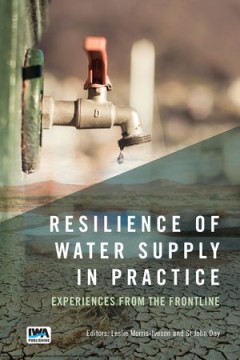
Resilience of Water Supply in Practice: Experiences from the Frontline
Water Resilience in Practice is co-edited by two experienced water sector professionals and reviews resilience in water supply service delivery in the form of a series of case studies from different economic contexts – ranging from low-income and fragile states to upper-income countries. It documents real experiences and reflects on the initiatives different service providers apply to strengt…
- Edition
- -
- ISBN/ISSN
- 9781789061611
- Collation
- -
- Series Title
- -
- Call Number
- -

Glass Making in The Greco-Roman World: Results of The Archglass Project
This book presents a reconstruction of the Hellenistic-Roman glass industry from the point of view of raw material procurement. Within the ERC funded ARCHGLASS project, the authors of this work developed new geochemical techniques to provenance primary glass making. They investigated both production and consumer sites of glass, and identified suitable mineral resources for glass making through …
- Edition
- -
- ISBN/ISSN
- 9789462700079
- Collation
- -
- Series Title
- -
- Call Number
- 930.1 DEG g
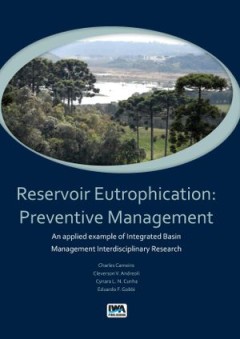
Reservoir Eutrophication: Preventive Management: An applied example of Integr…
The overall objective of Reservoir Eutrophication: Preventive Management is to present the environmental and anthropogenic factors associated with the process of eutrophication and algal blooms in the Rio Verde reservoir and propose lake use and management technologies in order to minimize the problem. Eutrophication process in Rio Verde reservoir with the occurrence of intense algal blooms is …
- Edition
- -
- ISBN/ISSN
- 9781780406473
- Collation
- -
- Series Title
- -
- Call Number
- -

Evolving as a Digital Scholar: Teaching and Researching in a Digital World
How to become digitally proficient as a teacher and researcher What does it take to become a digitally agile scholar? This manual explains how academics can comfortably navigate the digital world of today and tomorrow. It foregrounds three key domains of digital agility: getting involved in research, education and (community) service, mobilising (digital) skills on various levels, and acting…
- Edition
- -
- ISBN/ISSN
- 9789461663900
- Collation
- -
- Series Title
- -
- Call Number
- 302.231 EVO e
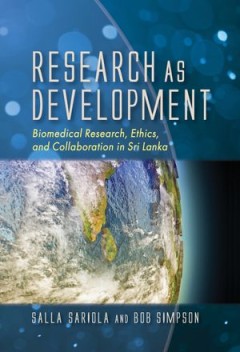
Research as Development: Biomedical Research, Ethics, and Collaboration in Sr…
In Research as Development, Salla Sariola and Bob Simpson show how international collaboration operates in a setting that is typically portrayed as "resource-poor" and "scientifically lagging." Based on their long-term fieldwork in Sri Lanka, Sariola and Simpson bring into clear ethnographic focus the ways international scientific collaborations feature prominently in the pursuit of global heal…
- Edition
- -
- ISBN/ISSN
- 9781501733628
- Collation
- -
- Series Title
- -
- Call Number
- -
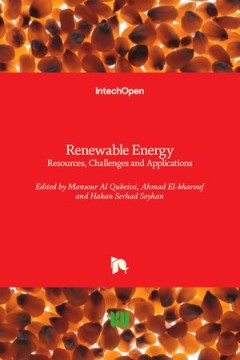
Renewable Energy: Resources, Challenges and Applications
The demand for secure, affordable and clean energy is a priority call to humanity. Challenges associated with conventional energy resources, such as depletion of fossil fuels, high costs and associated greenhouse gas emissions, have stimulated interests in renewable energy resources. For instance, there have been clear gaps and rushed thoughts about replacing fossil-fuel driven engines with ele…
- Edition
- -
- ISBN/ISSN
- 9781839621550
- Collation
- -
- Series Title
- -
- Call Number
- -
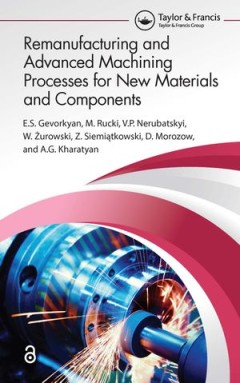
Remanufacturing and Advanced Machining Processes for New Materials and Compon…
Remanufacturing and Advanced Machining Processes for Materials and Components presents current and emerging techniques for machining of new materials and restoration of components, as well as surface engineering methods aimed at prolonging the life of industrial systems. It examines contemporary machining processes for new materials, methods of protection and restoration of components, and smar…
- Edition
- -
- ISBN/ISSN
- 9781000528671
- Collation
- -
- Series Title
- -
- Call Number
- -
 Computer Science, Information & General Works
Computer Science, Information & General Works  Philosophy & Psychology
Philosophy & Psychology  Religion
Religion  Social Sciences
Social Sciences  Language
Language  Pure Science
Pure Science  Applied Sciences
Applied Sciences  Art & Recreation
Art & Recreation  Literature
Literature  History & Geography
History & Geography